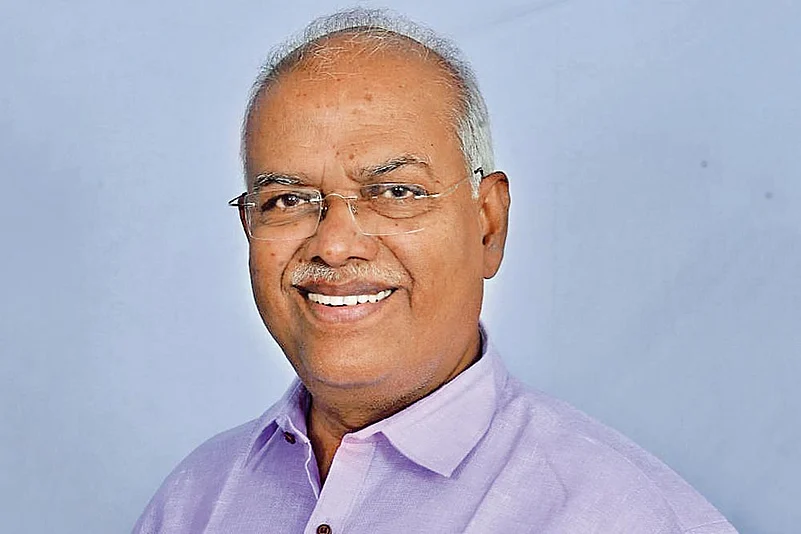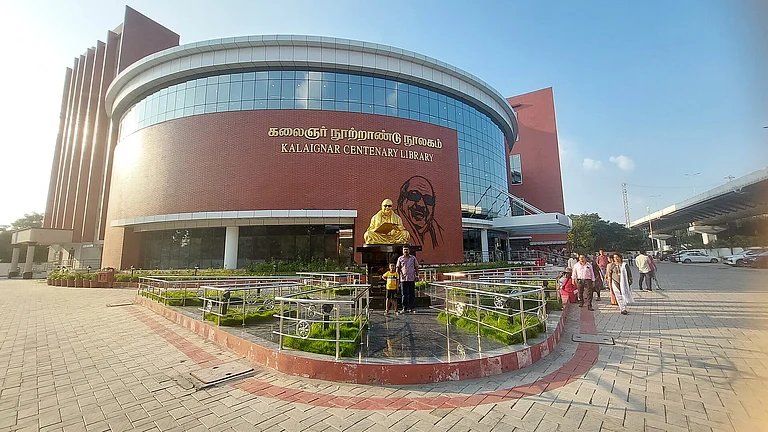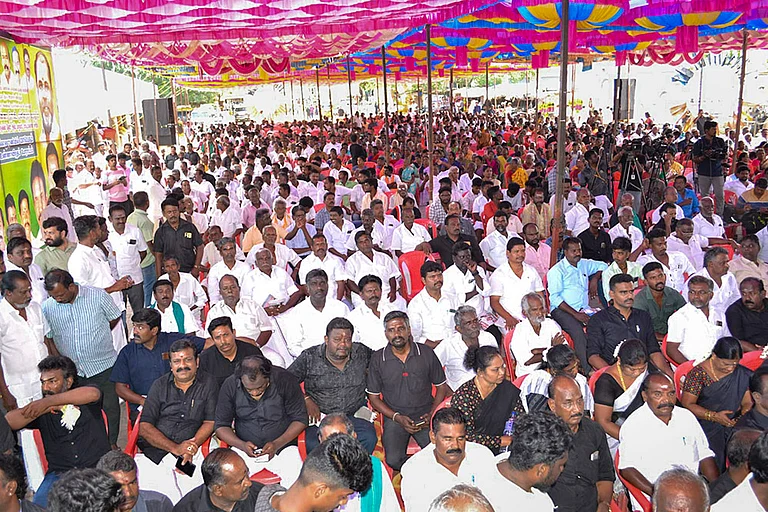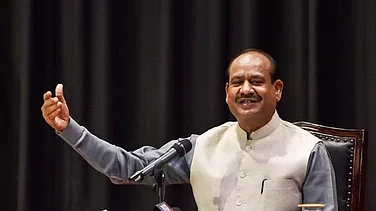Tamil Nadu has undergone significant growth in the last half-century. How did this transformation occur? Can it be attributed to the Dravidian parties coming to power?
In November 1916, the South Indian Liberal Federation came out with a Non-Brahmin Manifesto, highlighting education as a crucial tool for improving life. Subsequently, efforts were consistently made in this direction whenever an opportunity arose. During British rule, there was a period of dyarchy, during which educational and healthcare initiatives were undertaken within the limits of that authority. However, the transformative growth occurred rapidly after the Dravidian parties came to power in 1967. This is not to say that there were no developments before 1967. For instance, when C. Rajagopalachari, the Chief Minister at the time, reduced the number of schools, his successor Kamaraj reopened them. Two initiatives of Kamaraj in school education were particularly noteworthy. He decentralized schools, taking them to rural areas. He also provided state aid to private schools in areas where the government could not set up schools. The private schools were converted into government-aided schools.
He also introduced the midday meal scheme, which significantly increased student enrolment. However, the issue of dropouts persisted for a long time, with significant dropout rates among girls in rural areas and among boys in certain stages. It was a problem that persisted till the 1990s. To address this, the government introduced the marriage assistance scheme, offering financial aid to girls who completed eighth grade, which incentivized parents to educate their daughters. This scheme was later extended to include education up to the tenth grade, resulting in a drastic reduction in dropout rates. Nowadays, dropouts are rare and mostly due to unavoidable circumstances like migration, as schools closely monitor student attendance.
This widespread dissemination of education became a crucial foundation for Tamil Nadu’s development. Another key aspect was the establishment of economic democracy, which aimed at creating opportunities for all. However, this goal could only be achieved by dismantling existing power structures in rural areas. Kerala and Tamil Nadu are the only states to have achieved this, where voting during elections is not the only power people have; they have other significant powers as well.
How was the elimination of the existing hierarchy in rural areas accomplished in Tamil Nadu?
The first step was to ensure land ownership for tillers. The Land Ceiling Act was instrumental in acquiring excess land from large landowners and redistributing it to those without land, thereby reducing feudal power in rural areas. Before and after independence, Congress members were the major landowners, and anticipating the Land Ceiling Act, they transferred their lands to trusts, which were exempt from the Act. When M. Karunanidhi came to power, he sought to invalidate trusts registered prior to the enactment of the land ceiling Law passed by the state government and sent it to the President for assent, it was never approved. Consequently, Karunanidhi focused on enhancing legal protection for farmers. At that time, tenants found it challenging to prove land possession without written documents. The government then began to accept oral proof, including neighbours’ statements, as sufficient evidence, shifting the burden of proof to landlords. This made it significantly harder for landlords to evict tenants. The public distribution system was also crucial in breaking the hold of landowners over food grain supply to workers, as fair price shops ensured equitable distribution. Additionally, the hereditary karnam maniyam system in village administration was abolished, and the post of village administrative officer was created, filled through competitive exams, and made transferable like other government posts. The Mahatma Gandhi National Rural Employment Guarantee Scheme further reduced dependence on landlords for work. Improved road infrastructure in the state also played a crucial role in liberating rural masses, allowing them to pursue education, work, or other opportunities, thereby undermining the power of a few in rural areas.
This transformation in Tamil Nadu’s rural landscape mirrors the changes seen in England during the breakdown of feudalism and the subsequent Industrial Revolution. It represents a liberation from landlords’ control, allowing people the freedom to pursue opportunities beyond traditional agricultural occupations.
The widespread dissemination of education became a crucial foundation for Tamil Nadu’s development. Another key aspect was the establishment of economic democracy, which aimed at creating opportunities for all
Didn’t the two Dravidian parties that ruled after 1967 play a role in this development?
Whether the AIADMK can be considered a Dravidian party is debatable. However, the AIADMK’s actions have largely aligned with those of the DMK. For instance, the DMK government established the Tamil Nadu Civil Supplies Corporation, which was continued and expanded by subsequent governments, including the AIADMK. The number of fair price shops was significantly increased, with a focus on ensuring equitable access. Similarly, the abolition of the hereditary karnam maniyam system and the creation of the post of village administrative officer were originally recommended by a committee formed under the DMK government and later implemented by the AIADMK government under MGR. This continuity in empowering people and addressing rural issues underscores the commitment of both parties, despite any policy differences or differences in their approach towards the central government.
The AIADMK government’s decision to implement the Nutritious Meal Programme at government expense, was later strengthened by subsequent governments. Today the introduction of the breakfast scheme by our honourable CM M.K.Stalin further demonstrates the commitment to enhancing the welfare of the people.
Tamil Nadu approached economic liberalization with an open mind but also with caution, particularly regarding certain suggestions associated with the open economy. For example, while there were calls for the closure of fair price shops, Tamil Nadu maintained its commitment to providing essential commodities through these shops. Similarly, suggestions for privatizing services like healthcare were met with the introduction of health insurance by the government, ensuring that essential services remained accessible to all. The state also retained a significant role in education, running schools and colleges alongside private institutions. While there were trends towards privatization and closures of public sector undertakings in other parts of the country, Tamil Nadu maintained a balance, ensuring the continued operation of these institutions.




























